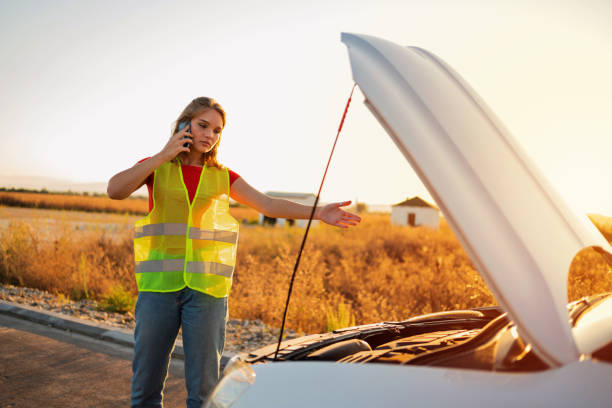Unforeseen emergencies on the road can happen when you least expect them. Knowing how to handle these situations can make a significant difference in ensuring your safety. Here are common driving emergencies and the best ways to handle them:
Shattered Windscreen
Driving on poorly paved roads increases the risk of debris or stones hitting your windscreen and causing damage. If your windscreen shatters, it’s important not to panic.
Safely pull over to the side of the road and find a blanket or a large piece of cloth to cover the ventilator openings. This prevents glass from falling into the car. Slowly push out the damaged windscreen, and remember to wear protective glasses to shield your eyes.
Drive cautiously to the nearest workshop to have your windscreen repaired or replaced.
Blown Tires
Experiencing a blown tire while driving can be quite startling due to the sudden noise. When this happens, your vehicle may veer to one side.
Stay calm and maintain a firm grip on the steering wheel while gradually reducing your speed. Guide your car safely to the side of the road, ensuring you are out of harm’s way.
Assess the situation and check if you have a spare tire to replace the blown one. If you don’t have a spare, contact roadside assistance for help.
Engine Failure
Engine failure can occur unexpectedly, leaving you in a vulnerable position on the road. If your engine cuts off suddenly, switch on your hazard lights and gently pump your brakes to alert other drivers of your situation.
If possible, maneuver your vehicle to the side of the road. If that’s not feasible, remain in your lane, keep your lights on, and call for assistance while ensuring you are visible to other drivers.
Brake Failure
Malfunctioning brakes pose a serious threat, especially when driving at high speeds on highways. If you notice a brake failure warning light or if your brakes stop responding, take immediate action.
Use your horn or headlights to alert other drivers about the issue and carefully steer your vehicle to the side of the road.
Avoid making sudden movements unless it’s necessary to prevent an accident. Once safely stopped, contact the nearest workshop for brake repairs.
Faulty Headlights
Problems with your headlights, whether due to a weak battery or a faulty connection, can be hazardous, particularly during nighttime or in poorly lit areas.
If you realize your headlights are malfunctioning, reduce your speed and gradually move your vehicle to the side of the road.
Activate your hazard lights if they still work, or place road hazard markers at the back of your car. Call roadside assistance and move away from the road.
If you don’t have access to a functioning phone, flag down another vehicle and ask for help.
Stuck Accelerator
Although rare, a jammed accelerator can lead to a potentially dangerous situation. If your accelerator becomes stuck, take immediate action to regain control.
Shift your car into neutral, apply steady pressure to the brakes, and safely guide your vehicle to the side of the road.
It’s crucial not to turn off the engine until you are completely off the road, as it may cause your steering to lock.
Once you are safely parked, turn off the ignition to prevent engine damage and contact a professional for assistance.
Remember, staying calm and following these guidelines can greatly increase your chances of safely managing driving emergencies.
Being prepared and knowing how to react will help ensure your well-being and the safety of others on the road. Also if your car needs a wash, consider heading to Brown Bear.
Learn more here:
